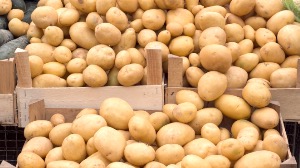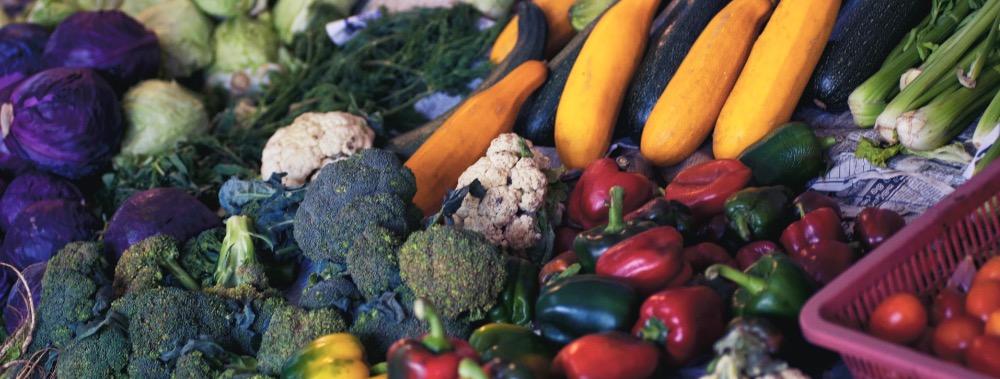The World Health Organisation recommends that everyone eats at least 400g (five 80g portions) of fruit and vegetables a day to lower the risk of several illnesses including heart disease, stroke and certain cancers. The five portions should all be different fruit and vegetables, because they all contain a different mixture of nutrients, so the more variety you eat the better.
Fruit and vegetables are a good source of vitamins, minerals and fibre. Most fruit and vegetables are naturally low in fat and calories so are good for helping to maintain a healthy weight.
What counts as a portion?

A portion of fruit is 80g. For example, 2 plums, 2 satsumas, 2 kiwi fruit, 3 apricots, 6 lychees, 7 strawberries, 14 cherries, 1 apple, 1 banana, 1 pear, 1 orange, 1 nectarine, half a grapefruit, 1 slice of papaya, 1 slice of melon (5cm slice), 1 large slice of pineapple, 2 slices of mango (5cm slices).
A portion of vegetables is also 80g. For example, 2 broccoli spears, 8 cauliflower florets, 4 heaped tablespoons of cooked kale, spinach, spring greens or green beans, 3 heaped tablespoons of cooked carrots, peas or sweetcorn, 1.5 full-length celery sticks, a 5cm piece of cucumber, 1 medium tomato, 7 cherry tomatoes.
One of your 5 portions can be 30g dried fruit, which is the equivalent of 80g of fresh fruit with the liquid removed. For example, 1 heaped tablespoon of raisins, currants or sultanas, 1 tablespoon of mixed fruit, 2 figs, 3 prunes, 1 handful of dried banana chips.
One of your portions can be 150ml of fruit juice, vegetable juice or smoothie. Although these are healthy in moderation you should avoid having too much as they contain free sugars, which are released from the fruit during the juicing / blending process.
One of your portions can be 80g (3 heaped tablespoons) of beans or pulses, such as baked beans, lentils or chickpeas. These are a healthy addition to the diet and and are high in fibre and protein, but they contain fewer nutrient than fruits or vegetables so are can only be used to count for one portion a day.
Tinned and frozen fruit and vegetables count towards your 5 a day, as they still contain mostly the same nutrients. The portion sizes are the same as for fresh fruit and vegetables. For example, 2 pear or peach halves, 6 apricot halves, 8 segments of tinned grapefruit, 3 heaped tablespoons of tinned or frozen carrots, peas or sweetcorn. It’s best to choose tinned foods that don’t contain added salt or sugar, as these are better for you.
What does not count as a portion?

Potatoes, yams and cassava do not count as one of your 5 a day because they contain mainly starch and less vitamins and minerals than other vegetables.
Ideas to help you get your 5 a day
The British Heart Foundation have some great suggestions to get more fruit and vegetables into your diet, including adding frozen vegetables into rice while it’s cooking, adding fruit to your breakfast cereal or porridge, and replacing potatoes with sweet potatoes, parsnips and other root vegetables. For 20 ideas see their website; BHF - 20 easy ways to get your 5-a-day
For more information on nutrition and 5 a day
Author

Dr Susi Jennings - Senior Lecturer and Unit Leader- BSC (Hons.) Nutrition with Professional Practice.

